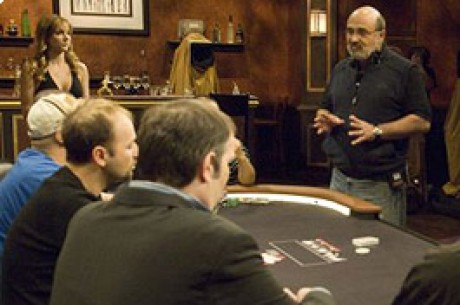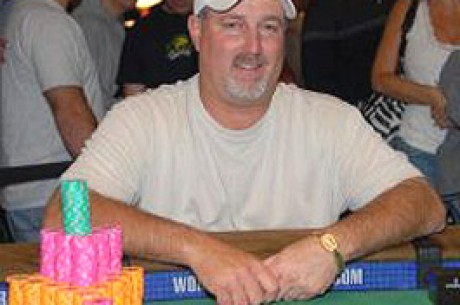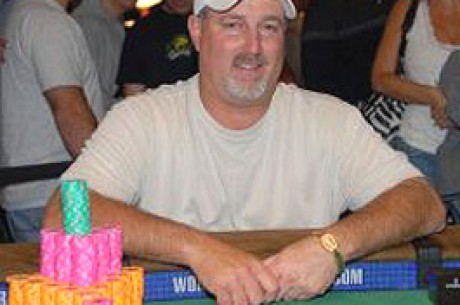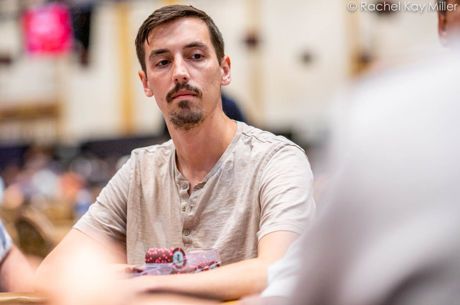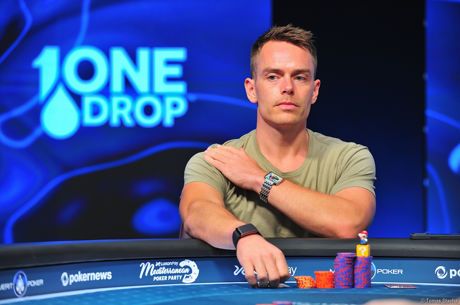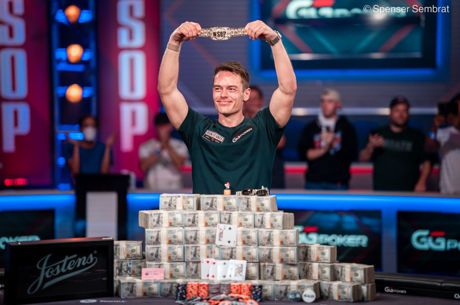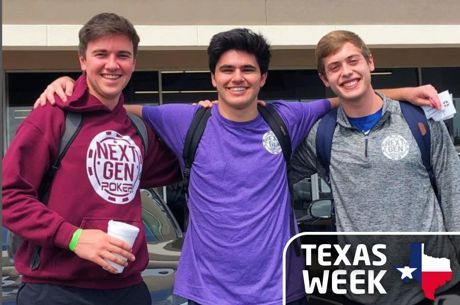The PokerNews Interview: Mori Eskandani, Part Two
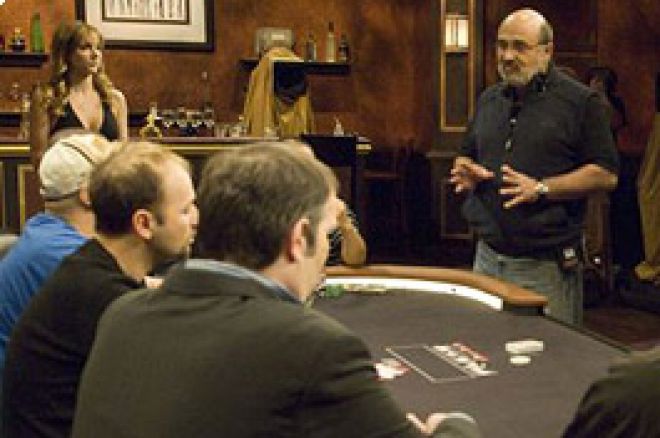
(Editor's note: In yesterday's Part One of this exclusive interview with Mori Eskandani, the groundbreaking producer, famed for his work on "High Stakes Poker," "Poker After Dark" and many other shows, detailed his poker-production beginnings.)
PokerNews: How has the UIGEA [Unlawful Internet Gambling Enforcement Act] changed the landscape of poker programming? Is it getting easier these last few months, or harder?
Mori Eskandani: It never gets easy. In the back of your mind, things can happen and regulations can come that will make it hard to operate. It never gets easier; you're always worried about that. But you're also hoping that people realize that poker is a game of skill. They call it – skill games are OK, and yet poker is not OK. It's really an oxymoron. There's no game that's got more skill than poker. Obviously we are hoping that people in Washington, people that are trying to convince the people in Washington to see that this is an American game, it's called Texas Hold'em after all, and it's legal in most countries in the world, and it's not legal in Texas! (laughs). We want them to see that this wonderful game is a game of skill, and it can be controlled, and it can be a lot of fun. Yes, it has changed the landscape. It's affected many of the smaller shows that interested parties who were operating in the U.S. would want to have, just to put their brand out. But, we're hoping it will all come back soon.
PN: Is it different producing a show for network television, like the NBC National Heads-Up Poker Championship, as opposed to a show for cable TV?
ME: We try to make them both the same. Are the requirements different? Yes. The networks obviously – they've got many more hoops to go through than cable, as far as what you can say, what you can't say, what you can show depending on the time of day. Like, if the show's airing at 3 in the afternoon, a lot of families are watching that could have younger kids. Otherwise, as far as what we try to do – we try to give them both the best quality that we can possibly give.
PN: How about a single-room, cash-game-style event like Poker After Dark versus a big tournament?
ME: All of our games – all of the games that we produce are invitational. Basically, we're going with the star power of the game. We also believe that people are going to learn more watching pros play. Sometimes against each other, sometimes against a few elite amateurs like High Stakes Poker. People have a chance to learn a lot more than having a tournament that, whether we like it or not, can have a table full of amateurs at the end. All of a sudden, every hand looks the same. Everyone's waiting for some sort of an A-J or 8-8. I've seen that before. I think the public has seen it and may have seen too much of it. That's why all of a sudden these shows are a little more welcome, because you live the day to day life of a professional, in which they change gears depending on who they're up against. Sometimes depending on their own mood! Believe it or not, we could have a pro come on the stage that had a bad day! It becomes apparent by the way they're playing.
PN: You produced the pay-per-view of the WSOP final table. Talk about some of the challenges in doing a live event with no hole cards.
ME: Before I say that, I'd like to say that when people say 'you produce' – there's so many people helping me, it's so unfair to ever say 'I produce'. I mean, Eric Drache from the early days, obviously, Henry Orenstein and all of his wonderful ideas, and now Eric Drache with all of his vast knowledge, and other people that work for our company. The wonderful producers that we contract out, that work pretty much exclusively with us from Los Angeles. All these people have become really, really helpful and all have become experts of poker for TV.
As far as the pay-per-view challenge – it is a challenge. When you don't have hole cards, you go back to the days before hole cards. We try to make it fun, as much as we can. We try to have some guesses as to what the hole cards could be. But – It's never the same. It's just never the same. I think someday they might decide, the operators of the World Series, that it's worth it to completely seclude the room and show it live, with the hole cards, rather than have a big crowd around the table. As long as there's a big crowd around the table, it's not fair to show the hole cards. We talked about it, and we all agreed that it's just not right. Even if Gaming allows it, we're all poker players. If someone's got a certain style that's successful, for example if I find out that Seat 2 would throw his blind away every time I raise six times the big blind, and I'm successful at that. And then someone tells him, "Hey, every time someone raises six times your big blind, he's got nothing!" If that information is given to that person after an hour, then I'm in trouble. That person will play back at me. So that stuff is obviously a big part of the game. It can't happen unless the players are in seclusion while they're playing.
PN: How did you approach this production as far as improving on last year's show?
ME: Well, we tried to make it more fun. We had a ton of footage already restored for us in the truck, whether it was Stu Ungar matches – or there were some interesting occurrences in the World Series that made the Internet, or people talk about controversies that happened. We tried to bring those back and have people talk about it. We lined up many, many poker stars to come in and we invited them over and they came in and made the show fun. Basically, I don't think there's much you can do without the hole cards. You can just make it as much fun as possible, and of course there are interviews when players get knocked out right away, we bring them into the booth and let the public know how they're feeling, and all that. It was, again, a collective effort from ESPN. They gave us all the footage we needed. Whatever ideas that they had, coupled with ours, we tried to make this happen.
PN: The new season of High Stakes Poker premieres August 27. How is it different than last season, and are there any surprises that viewers can look forward to?
ME: Yes and yes and yes! The only thing I can say about the season of High Stakes Poker coming – don't miss one minute of it! We were fortunate enough to have the cards give us hands. The cards can go cold, they can go hot! We happened to have a group of players that were ready to gamble, ready to play, ready to mix it up – and the cards wouldn't let them down! You can just imagine! I can't tell you how much happens this season of High Stakes Poker. I can't tell you. I mean, there's just like – every commercial break, people are going to be anxious for it to restart, because something new goes on, and on, and on, and on! It's just very, very fun to watch.
How is it different? We do have our $100,000 buy-in, and we had one day that was $500,000 buy-in, minimum. The blinds had a forced third blind, so blinds are 300 and 600, the forced blind is 1200. Just about 80% of the hands, there's a straddle of 2400. And a re-straddle of 4800 in some of the hands went on. It played very big. Some people got bloody, some people got wealthy (laughs). I have to think GSN is very happy, because what they have now – the fourth season is truly a classic. Every hour is going to be very, very fun to watch.
PN: So the earlier episode with Negreanu and Gus Hansen is nothing compared to what you have coming up?
ME: It's quite different. Obviously you know, see what sticks in your mind of some of the highlights of earlier episodes, like Negreanu and Gus Hansen, or Sam Farha and Barry Greenstein, you know, the famous last hand, aces versus kings. Or in this case, four of a kind versus a full house. We didn't need that. We didn't need those big hands. With this crowd, with the mix and match of the characters that we had, we didn't need hands that big. Hands that were half as big, or in some cases there were no hands even – just the players playing off each other, bouncing and doing their thing, made for some really really interesting poker. Of course we had some big hands too, but we didn't have any four of a kind. We didn't need it. These guys would have huge pots and sometimes the person that won the pot was holding nothing (laughs). It's real poker.

